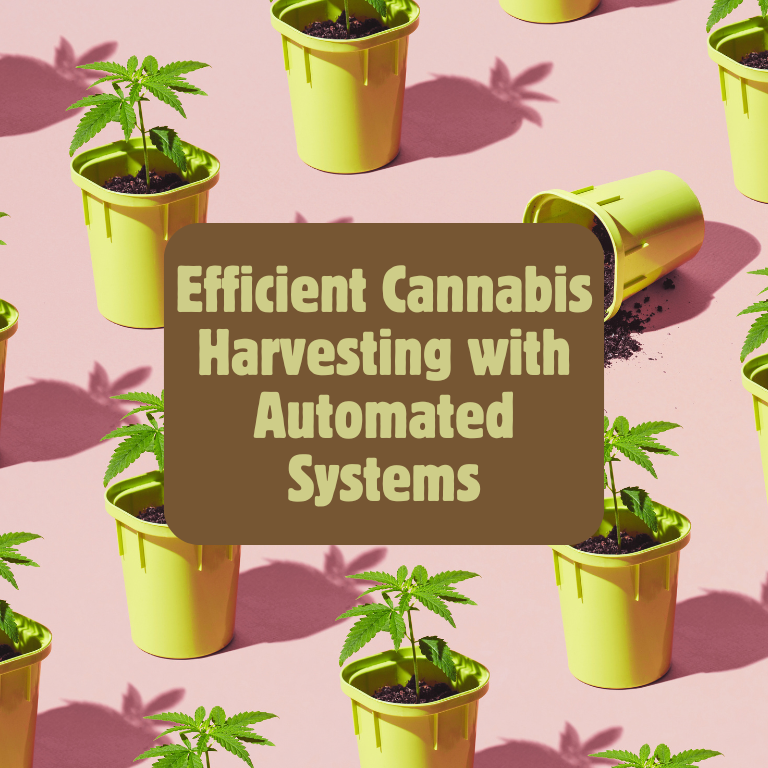Efficient Cannabis Harvesting with Automated Systems

Automated Systems for Efficient Cannabis Harvesting and Processing
As the cannabis industry continues to expand, the demand for more efficient and cost-effective methods of harvesting and processing has surged. Automated systems are transforming the way cannabis is cultivated, harvested, and processed, offering significant advantages in terms of efficiency, labor costs, and product quality.
Traditional Methods vs. Modern Techniques
Traditional cannabis harvesting and processing methods are labor-intensive and time-consuming. Workers manually cut plants, trim buds, and process the harvest, leading to high labor costs and potential inconsistencies in product quality. Modern automated systems, however, streamline these processes, ensuring greater efficiency and uniformity.
Introduction to Automation in Cannabis Cultivation
Automation in cannabis cultivation involves the use of advanced technologies and machinery to perform tasks that were traditionally done by hand. From automated trimming machines to sophisticated sorting systems, these technologies are designed to handle large-scale operations with precision and speed.
Benefits of Automation in Harvesting
Automated systems can process cannabis plants much faster than manual methods. Machines designed for harvesting can handle multiple plants simultaneously, significantly reducing the time required to bring the crop from field to processing facility.
Consistency and Quality Control
Automated systems provide consistent results, reducing the variability that often occurs with manual labor. This consistency ensures that each plant is harvested at the optimal time and processed to maintain high-quality standards, resulting in a superior product.
Reduced Labor Costs
One of the most significant benefits of automation is the reduction in labor costs. By replacing manual labor with machines, cannabis producers can cut down on the number of workers needed, which translates to substantial savings in wages and associated costs.
Automated Trimming Machines
Trimming is a critical step in cannabis processing, affecting both the appearance and quality of the final product. Automated trimming machines can efficiently trim buds, maintaining uniformity and reducing the need for manual labor. These machines can handle large volumes of cannabis, significantly speeding up the processing time.
Automated Sorting and Packaging
Sorting and packaging are other labor-intensive tasks that benefit from automation. Automated sorting systems can quickly and accurately classify cannabis buds by size and quality, ensuring that products meet specific standards. Automated packaging machines can then package the sorted cannabis efficiently, reducing the risk of contamination and human error.
Enhanced Productivity
Unlike human workers, automated systems can operate around the clock without breaks. This continuous operation maximizes productivity and ensures that harvesting and processing can keep pace with the growth cycles of cannabis plants.
Scalability
Automated systems are highly scalable, allowing cannabis producers to expand their operations without a corresponding increase in labor costs. As demand for cannabis products grows, producers can invest in additional machines to meet increased production needs.
Improved Worker Safety
Automation reduces the physical strain on workers by taking over repetitive and strenuous tasks. This not only improves worker safety but also reduces the risk of injuries and associated downtime.
Minimized Exposure to Hazardous Substances
In cannabis processing, workers may be exposed to dust, allergens, and chemicals. Automated systems minimize this exposure, creating a safer working environment and reducing health-related issues.
Initial Investment Costs
While automation offers numerous benefits, the initial investment in automated systems can be significant. Cannabis producers must weigh these upfront costs against the long-term savings in labor and increased efficiency.
Maintenance and Technical Expertise
Automated systems require regular maintenance and technical expertise to operate efficiently. Producers need to invest in training for their staff and ensure they have access to skilled technicians who can manage and repair the equipment.
Future Trends in Cannabis Automation
The future of cannabis automation lies in the integration of artificial intelligence (AI) and the Internet of Things (IoT). AI can optimize harvesting schedules and processing parameters, while IoT devices can monitor plant health and environmental conditions in real-time, providing valuable data to improve overall efficiency.
Sustainable Practices
As sustainability becomes increasingly important, automated systems are being designed to reduce energy consumption and waste. Eco-friendly harvesting and processing technologies are on the rise, aligning with the industry’s move towards more sustainable practices.
The adoption of automated systems in cannabis harvesting and processing is revolutionizing the industry. These technologies offer significant benefits, including increased efficiency, reduced labor costs, and improved product quality. As the industry continues to grow, the integration of advanced automation will be key to maintaining competitiveness and meeting the rising demand for cannabis products. By embracing automation, cannabis producers can ensure a more efficient, cost-effective, and sustainable future.











